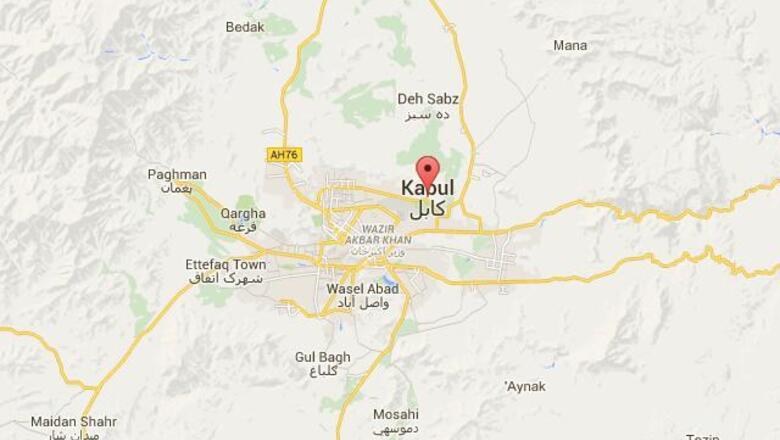
views
A suicide attacker blew himself up near the Kabul police academy on Friday, officials said, with heavy casualties expected in the second major attack in the Afghan capital in less than 24 hours.
The incident, which comes as cadets were returning to the academy after their two-day weekend, marks a serious breach of security at a premier training institute for Afghan security forces.
"A suicide bomber on foot blew himself up near the academy," said Deputy Interior Ministry Spokesman Najib Danish. "Heavy casualties are expected."
The bomber was dressed in police uniform and managed to get close to a group of officers before detonating his explosives, another security official said.
Heavily-armed security officials cordoned off the area and ambulances with wailing sirens were seen rushing to the scene.
Kabul Deputy Police Chief Gul Agha Rouhani confirmed the suicide attack but refused to comment on possible casualties.
The academy in west Kabul is a premier training institution for police forces in Afghanistan, with between 2,000 and 3,000 cadets graduating every year.
The suicide bombing comes less than 24 hours after a truck bomb tore through central Kabul, killing 15 civilians and wounding 240 others in the first major attack in the Afghan capital since the announcement of Taliban leader Mullah Omar's death.
No group immediately claimed responsibility for either of the attacks, which come as the Taliban steps up their summer offensive despite a bitter power transition within the militant movement.
The carnage comes a day after Taliban insurgents killed nine people in multiple attacks on police targets, including a truck bombing in the volatile eastern province of Logar.
The uptick in attacks highlight growing insecurity in the country amid a faltering peace process with the Taliban as Afghan forces face their first summer fighting season without full NATO support.
A UN report published on Wednesday said civilian casualties in Afghanistan hit a record high in the first half of 2015.
The report said 1,592 civilians were killed, a six percent fall from 2014, but the number of injured jumped four percent to 3,329.
Overall, casualties reached their highest level since the UN began issuing its authoritative reports in 2009.
The statistics are a grim indicator of the expanding insurgency, with Afghan forces increasingly battling the militants on their own after NATO's combat mission ended in December.
US-led NATO forces still have a 13,000-strong residual force for training and counter-terrorism operations.
The Taliban face growing internal divisions after Mullah Akhtar Mansour was named as the new head of the insurgent movement last week.
This came shortly after the Taliban's confirmation of the death of Mullah Omar, who led the militant movement for some 20 years.
The escalating violence demonstrates Mullah Mansour's attempt to boost his image among Taliban cadres and drive attention away from internal divisions over his leadership, observers say.
The acrimonious power struggle has cast a pall over a fragile peace process aimed at ending Afghanistan's long war.
The Taliban have distanced themselves from the second round of talks that were scheduled for last week, but were cancelled after the announcement of Omar's death.




















Comments
0 comment